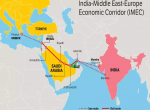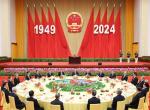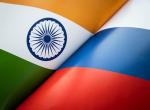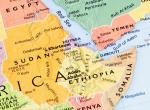Perhaps the most notable development in world affairs today is the dawn of Asian century. If the 20th century was dominated by the rise of US and trans-Atlantic relations , the global centre of gravity is invariably shifting to East Asia in the current century. However, much of the discourse on the region tends to focus overwhelming on the phenomenal rise of China and to a lesser extent the emergence of India. It is argued that these two countries, possessing largest population bases, and thus huge markets, would be at the centre of much of what is happening in East Asia. Three centuries back before the launch of colonialism together the two countries constituted some 50 percent of global GDP and, if the present trends were to continue, by 2050 their combined output is likely to be at around 40 percent.
In PPP terms, China’s economy is already the world’s largest and India’s the third largest. By 2008, China had emerged the largest manufacturing nation and in 2012 it became the largest trading nation in the world. Despite slowdown in the last couple decades, Japan continues to be an economic powerhouse with mammoth private financial assets at around US$ 14 trillion (as of December 2014) and a GDP of over $5 trillion. More importantly, it is still a leader in several niche advanced technologies and continues to be the single largest source of FDI in East Asia.
With its huge human resource base, a massive demographic advantage, and strong hold on certain niche areas such as information technology and pharmaceuticals, India is forecast to emerge as a major economic growth driver in the coming years. The region already holds more than half the world’s foreign exchange reserves and accounts for nearly a quarter of financial assets. It has logged double the average world’s growth rates and indications suggest that buoyant outlook will continue for the foreseeable future. Indeed, most credible studies have forecast that Asia’s share of global output will increase from 27.7 percent in 2010 to 52.3 percent by 2050.
No question that China and India dominate much of the discourse on East Asia, but it would be foolhardy if we fail to acknowledge the fact that the entire East Asian region, comprising more than half of the world’s population, is on the rise. Indeed, a large number of small and medium countries have a pivotal role in making the East Asian region economically the most vibrant in the world. Countries such as South Korea, Singapore, Hong Kong and Taiwan have emerged as major capital surplus countries and their economic roles are rapidly expanding. Of the total of nearly $7 trillion foreign exchange reserves held by the East Asian countries, the above four countries alone have nearly $1.5 trillion though their combined population is just about 85 million.
On the other hand, East Asia is also facing the most testing times politically. The breakdown of the cold war bipolar order has thrown up uncertainties and the region is witnessing unprecedented developments such as the rise of Asian powers, which are not only becoming more assertive but are also redefining their roles. The robust US military presence in the region is in no doubt but it is no more the sole determinant regional security architecture. Concomitantly, the region is also witnessing fundamental shifts in maritime environment including the emergence of new major maritime powers, maritime boundary disputes becoming highly contentious, and several looming non-conventional maritime threats. Bouts of tensions among neighbours are rising concerns about regional peace and stability.
Against this backdrop, the issue that has not received much attention is the potential cooperation that India and Korea can forge even while New Delhi intensifies its multifaceted engagement with East Asia. Perhaps we in India need to keep in mind that, when most countries were indifferent after market reforms were introduced in the early 1990s because of its poor infrastructure and notorious red tape, South Korea was willing to take risks by investing especially in the manufacturing of automobiles and consumer durables. Despite all odds, it managed to create a niche for its products. These two have also signed a Comprehensive Economic Partnership Agreement (CEPA) in 2010. The bilateral trade increased to over US$16 billion in 2013 but it is nowhere near the targets set under CEPA of $40 bn. by 2015. Indeed, the current bilateral trade is miniscule compared to South Korea’s trade with China, which was about 230 bn. Similarly, Korean investments in India, which cumulatively stood at $3.5 bn. by 2013, constituted just 2.5 percent of its overall overseas investments. In fact, Indian companies have invested nearly $ 3 bn. in Korea. It needs serious introspection as to why India managed to attract so little Korean investment.
Besides further strengthening economic relations, to build a solid Strategic Partnership (agreed during President Lee Myung-bak’s visit in January 2010), India and Korea have to undertake concerted efforts to broad base the relationship. The interactions or exchange of views on issues of common interest and concern, especially at the Track II level, are minimal. One such area is the emerging East Asian security and the likely order that might come about where both have high stakes and hence exchange of views and coordination of policies become crucial.
Two, both are actively involved in several regional multilateral mechanisms, both security and economic related. As East Asia enters an uncertain era, multilateral frameworks can play a critical role in dispelling misunderstanding and mitigating concerns. Three, at the bilateral level, India and Korea can forge close defence links and promote security cooperation. India and South Korea have been conducting naval exercises since the signing of the 2004 as part of an agreement. At the first-ever talks between the two defence ministers during the Korean defence minister’s visit in May 2007, it was further agreed to qualitatively augment defence cooperation, to include regular naval drills and high-level defence exchanges. The 2010 Strategic Partnership agreement envisaged to cover a range of activities including setting up of a joint commission of foreign ministers for annual security dialogue, defence exchanges, greater cooperation between the navies and coast guards in areas pertaining to the safety and security of international maritime traffic, etc. However, the progress so far seems to be tardy. Unfortunately the deal for the supply of Korean mine countermeasure vessels has been scrapped for various reasons, which is a setback for defence ties.
The other area that has huge potential is civilian nuclear cooperation. Now that South Korea has emerged as a leading supplier of advanced civilian nuclear reactors, time has come for India and South Korea to reinvigorate the 2011 nuclear cooperation agreement and to undertake some tangible initiatives. Unlike Japan, which has reservations because India is a non-NPT state, Seoul has no such problems.
Now that the Modi Government has launched a new phase of engaging East Asia called “Act East”, New Delhi must realise that South Korea is a key cog in this. Unless a comprehensive relationship encompassing various dimensions is built, the India-Korea Strategic Partnership will remain incomplete.
G V C Naidu is Professor at the Centre for Indo-Pacific Studies, JNU









Post new comment